Nonggamatjip Mil (농가맛집 밀)
12.2 Km 4139 2024-02-23
1566 Deogun-ro, Suryun-myeon, Seongju-gun, Gyeongsangbuk-do
054-931-2660
Nonggamatjip Mil is located near Gayasan Wildflower Botanical Garden. This establishment serves dishes made from vegetables harvested from Gayasan Mountain, in-house produced honey, and agricultural products from Seongju. Their signature offering is the Mil hanjeongsik (Korean table d'hote), featuring borigulbi (barley-aged dried yellow croaker), grilled chicken, and japchae. Additionally, they offer handmade bowls, honey, and flower tea for sale.
Gayasan National Park (Baegundong Area) (가야산국립공원-백운동 지구)
12.6 Km 19960 2021-04-28
Baegun-ri, Seongju-gun, Gyeongsangbuk-do
+82-55-930-8000
Gayasan Mountain in Gyeongsangbuk-do was designated as a national park in 1972. The mountain's main peak, Chilbulbong Peak, towers at 1,433 meters. It borders Seongju-gun, Hapcheon-gun and Geochang-gun. In particular, the mountain range stretching along Suryun-myeon, Seongju-gun is famous for its scenic nature. Furthermore, the beautiful Gayasan Beltway, which extends from Suryun-myeon to Gayasan Mountain, highlights the splendor and grandeur of the precipitous crimson cliffs.
Gaya Hotel (가야호텔)
12.7 Km 8298 2020-04-24
52, Gayasansingmurwon-gil, Seongju-gun, Gyeongsangbuk-do
+82-54-931-3500
Gaya Hotel is located 560 meters above sea level on Gayasan Mountain in a pristine natural environment. The hotel also offers a sauna that uses natural mineral water. Near the hotel is the only Korean wild flower botanical garden.
Gayasan Wildflower Botanical Garden (가야산 야생화식물원)
12.8 Km 13233 2021-12-22
49, Gayasansingmurwon-gil, Seongju-gun, Gyeongsangbuk-do
+82-54-931-1264
Gayasan Wildflower Botanical Garden opened on June 16, 2006 as the nation's first botanical garden dedicated to wildflowers. The garden is home to over 400 plant species, ranging from wildflowers to trees, and serves as a cultural space with educational research and preservation training. In addition to the general exhibition hall, there is a greenhouse on the basement level. There are 92 tree types including pine, 54 bush types including royal azalea, and 257 wildflower types including windflowers. The garden is beautiful all year round, showcasing the changing of the seasons.
Gayasan National Park Nature Center (국립공원 가야산생태탐방원)
14.1 Km 1 2024-02-23
313 Bongyang-ro 1-gil, Suryun-myeon, Seongju-gun, Gyeongsangbuk-do
Situated in Gayasan National Park, the Nature Center invites visitors to explore the moutain's ecology. Established in 2018 on the grounds of the former Gaya Farm, it serves as a sanctuary for restoring the body and mind and for finding inspiration amidst nature. Facilities include a dormitory, an education center, a restaurant, a nature walk trail, and an outdoor concert hall. The center's ecotourism programs feature trail trekking and the Yuyujajeok Healing Day, offering activities like soap-making and insect model crafting. Noteworthy nearby sites include Gayasan Wildflower Botanical Garden and the Gayasan History & Myth Hall.
Hongryudonggyegok Valley (홍류동계곡)
14.4 Km 8817 2020-01-06
1502-9, Gayasan-ro, Gaya-myeon, Hapcheon-gun, Gyeongsangnam-do
+82-55-930-8000
The 4 km valley between the entrance of Gayasan Mountain National Park entrance and Haeinsa Temple is called Hongryudonggyegok Valley. It was named so because the leaves turn so crimson that the water of the valley reflects the color and appears crimson as well. This is the place where Chi-Won Choe, after returning from Dang China to Silla (BC 57-AD 935) found Korea in disarray. It was too much to bear for him so he retired to live privately with poetry until his death.
There are 19 famous places in Hongryudonggyegok Valley, including major cultural assets like Jongsangjeong Pavilion, Nakhwadam, and Bunokpok. The scenery of Nongsanjeong Pavilion, where Chi-Won Choe read poetry and played baduk, is especially beautiful. On the opposite side is a rock where you can see the handwring of Chi-Won Choe. The Yongmunpokpo Falls, located on the north end of the valley, has beautiful scenery with its harmonious blend of falling water and Giamgoiseok (fantastic rocks and stones).
The scenery of Hongryudonggyegok Valley changes every season, and it is the finest part of Gayasan Mountain. It is famous for the azaleas in full bloom during the spring, and for the thousand-year-old pine trees and broad-leaved trees growing thickly throughout the valley and the cool, clear water that runs through it during the summer. In the fall, the nearby pine tree forests and broad-leaved trees tinge in color and accentuate the crimson foliage of autumnal leaves, making the crimson reflection of the leaves in the valley water look like a rising flame, and shows why the valley was named Hongryudonggyegok Valley.
Gayasan National Park (Hongnyu-dong, Cheongnyang-dong Area) (가야산국립공원(홍류동,청량동지구))
15.8 Km 32609 2021-06-08
1200, Gayasan-ro, Hapcheon-gun, Gyeongsangnam-do
+82-55-930-8000
Gayasan Mountain stretches along the border of Gyeongsangnam-do and Gyeongsangbuk-do in an area of approximately 76 square kilometers. The mountain's peak, Sangwangbong Peak, reaches 1,430 meters above sea level. Gayasan Mountain was designated as Scenic Site No. 5 in 1966 and National Park No. 9 in 1972 due to its breathtaking scenery. Gayasan Mountain is known to offer one of the best scenic views in the country and also as the home of Haeinsa Temple.
Hapcheon Haeinsa Temple (해인사 (합천))
16.1 Km 109042 2022-12-26
122, Haeinsa-gil, Hapcheon-gun, Gyeongsangnam-do
+82-55-934-3000
Haeinsa Temple is one of Korea's three largest temples, and was founded during the third year of King Ae-jang's reign (802) by two monks Suneung and Ijung. The name "Haein" originates from the expression "Haeinsammae of Hwaeomgyeong" (Buddhist scripture), which means truly enlightened world of Buddha and our naturally undefiled mind. Along with the Printing Woodblocks of the Tripitaka Koreana (National Treasure) and Janggyeongpanjeon Depositories (National Treasure), various treasures are enshrined at Haeinsa Temple.
Gayasan Sori-gil (가야산 소리길)
16.3 Km 6689 2024-02-23
1783 Gayasan-ro, Gaya-myeon, Hapcheon-gun, Gyeongsangnam-do
Gayasan Sori-gil is a 6-kilometer walk from Hapcheon Theme Park of the Tripitaka Koreana to Yeongsangyo Bridge, near Haeinsa Temple (one of the three major temples in Korea), which restores the old Hongnyu-dong path. This route allows you to stroll along the valley, where you can listen to the sounds of water, birdsong, and immerse yourself in the natural beauty of Korea. Along the way, you can visit some of Gayasan's stunning locations, including Nongsanjeong Pavilion, Gilsangam Hermitage, Nakhwadam Reservoir, and a red clay trail.
Pocheongyegok Valley (포천계곡)
16.4 Km 40429 2021-02-18
Hwajuk-ri, Seongju-gun, Gyeongsangbuk-do
+82-54-930-8371
Pocheongyegok Valley is a representative valley of Gayasan Mountain with clear water and a lush forest. The valley used to be a learning place for local scholars in the old days. Eungwa Lee Wonjo, a civil minister and a great scholar during the late Joseon period, spent the later years of his life at Mangwijeong Pavilion located along the upper steam near a small waterfall. The beautiful valley scenery stretches over 7 kilometers.

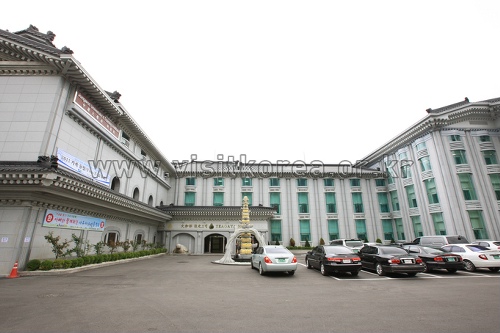
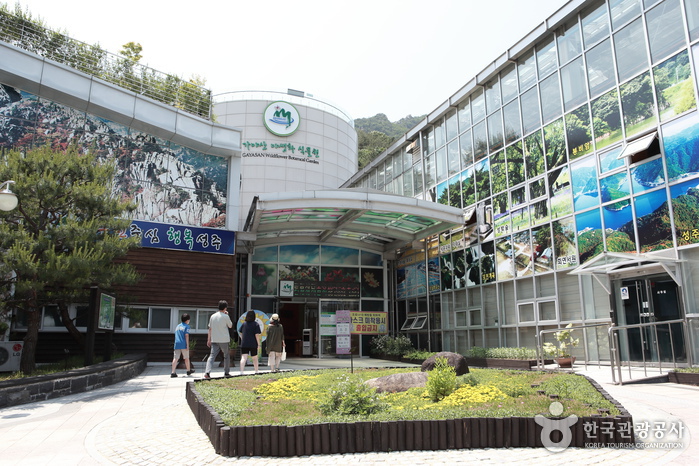
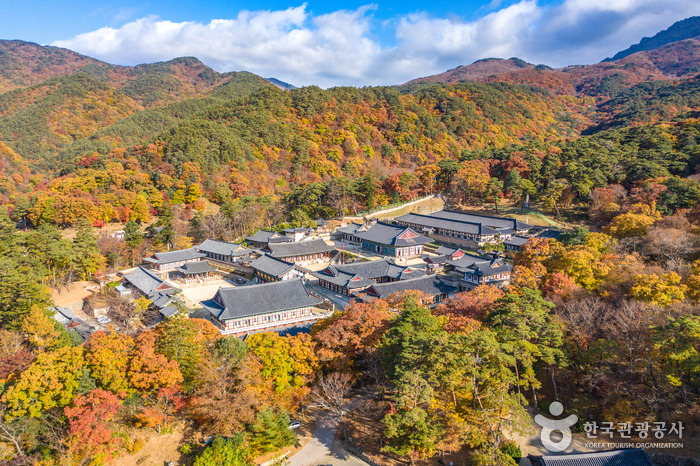
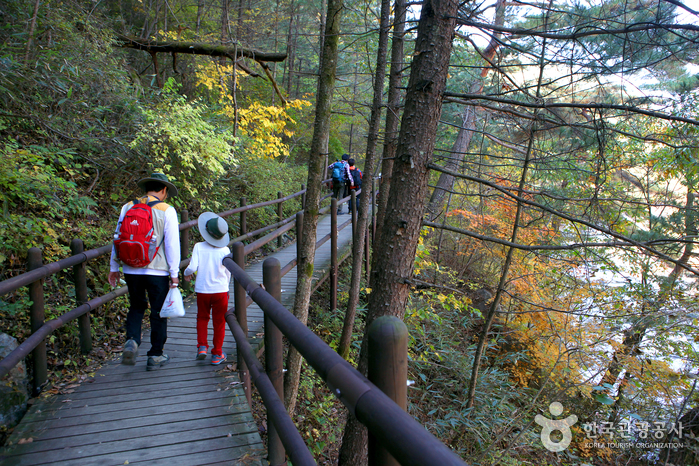
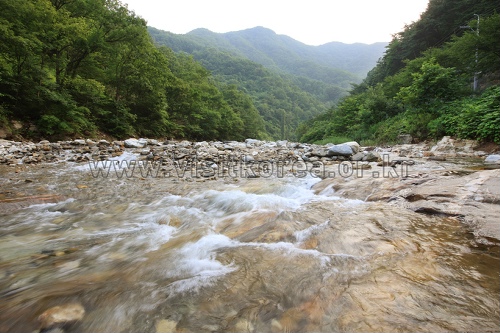
 English
English
 한국어
한국어 日本語
日本語 中文(简体)
中文(简体) Deutsch
Deutsch Français
Français Español
Español Русский
Русский